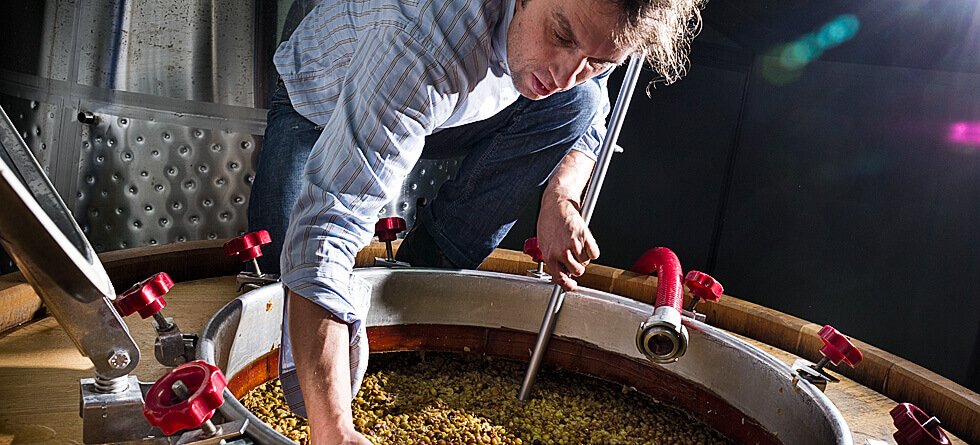

Burja a history
The Burja Estate connects a traditional Vipava winegrowing farm with modern understanding of wine. But aren’t the two actually the same? Don’t we want to recognize our roots, bases and flavors in wine and at the same time feel the soil and climate of the vineyards?
According to some data, the beginnings of viticulture and winemaking in the area of modern-day Slovenia can be traced all back to ancient Noricum, the predecessor of Carinthia. You can see that in the Roman stone with the vine, vase and two panthers (2nd century) above the main entrance to the Cathedral of Holy Lady (Gospa Sveta). The Celts probably grew vines and produced their own wines. When the Romans advanced into the area of modern-day Slovenia, the viticulture methods probably changed and new sorts of vines and wine production methods were introduced. »Vinum Pucinum«, which grew on the rocky hills (»pečine« in Slovenian) east of Aquileia, was mentioned in the Roman times.
The situla (vessel) from the village of Vače (6th century BC) denotes the parties where wine was also present.
A special type of democratic organization was established in the viticulture on the Slovenian territory and lasted until 1848. A so called gorska pravda was an assembly of viničars (a kind of vassals, who cultivated the vineyards) and their masters – the owners of the vineyards. This organization was not known among the Bavarians, the Lombards or the Eurasian Avars.
Moreover, the long and rich history of viticulture resulted in a wide collection of local Slovenian vines, mostly white ones. In his Austrian verse chronicle, Ottokar names some varieties of Slovenian wines,
namely Teran (terran), Vipavec (win von Wippach), Rebula (reinwal), Pinela (pinol), wine from Milje (muglaere), wine from Brda (ecke).
Rich descriptions of Vipava viticulture and winemaking can also be found in Winemaking for Slovenes (Vinoreja za Slovence - the first Slovenian book on viticulture) written by Matija Vertovec in 1844 and in The Glory of the Duchy of Carniola (1689) by Johann Weikhard von Valvasor. The Lavrenčič family moved in the Vipava Valley in 1499, and then like the majority of the population engaged in agriculture and viticulture.
My mother's family engaged in blacksmithing, besides, they also had some vineyards.
Primoz - Burja Estate
